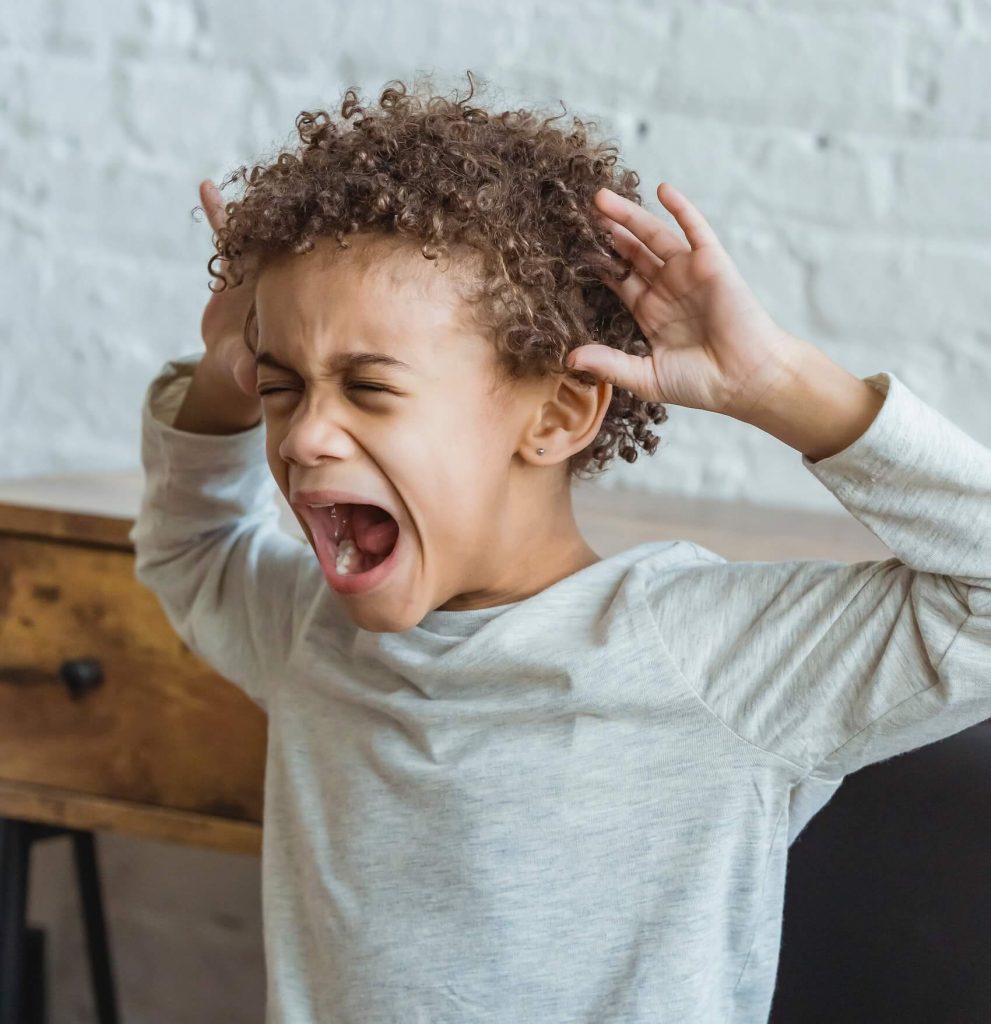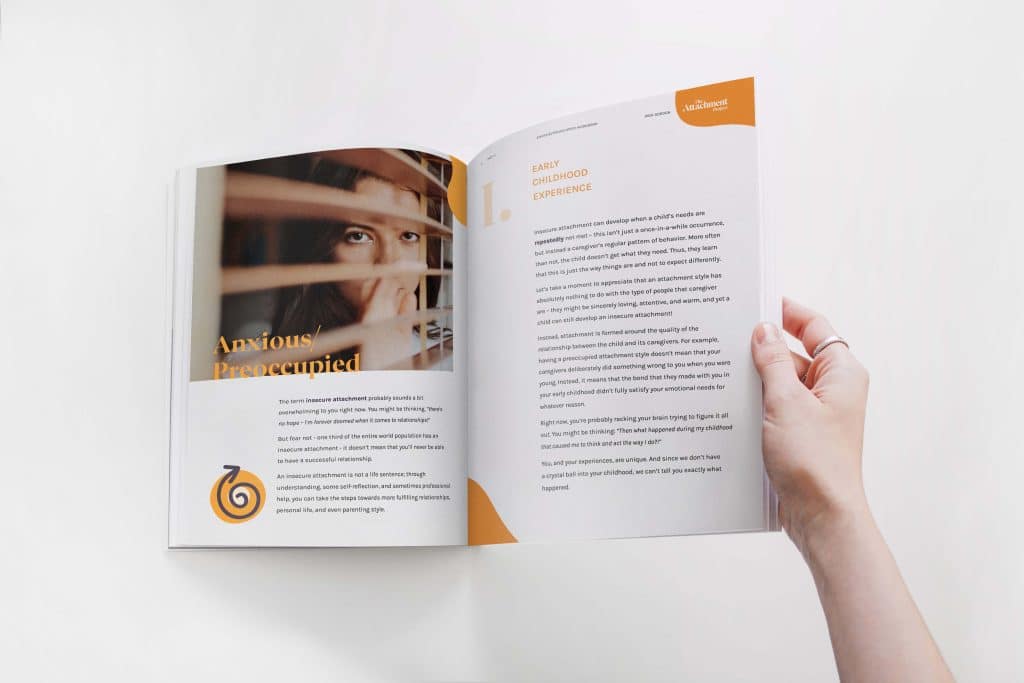Anxious Attachment: Causes & Symptoms

Published on July 2, 2020 Updated on June 5, 2023
Anxious attachment is one of the three insecure attachment styles. Referred to as anxious ambivalent attachment in children, anxious attachment develops in early childhood. Most often, anxious attachment is due to misattuned and inconsistent parenting.
Low self-esteem, strong fear of rejection or abandonment, and clinginess in relationships are common signs of this attachment style. Although it does require effort, individuals with such attachment issues can develop a secure attachment style over time.
We will cover the most common questions around anxious attachment:
- How does attachment form in early childhood?
- How do children develop insecure attachment styles?
- What specifically causes anxious attachment in children?
- Which children have a higher risk of developing anxious attachment?
- What are relationships with anxious adults like?
- Can you change an anxious attachment style?
- How to heal from anxious attachment?
Everything you need to know about anxious attachment
Appreciation, attention, and support. Many of us crave that. We want to be loved, we want to feel secure, valued, and appreciated. No one likes to be left out in the cold. It is normal to seek approval, help, and emotional responsiveness from your family, friends, and partners.
It is also normal to fear losing someone’s love. But what if these needs and fears become too strong? Can the need for safety and the fear of abandonment be so powerful that they control your relationships? It might not always be easy to recognize an insecure attachment style in adults.
Patterns in social relationships might be inconsistent or barely noticeable. There are, however, particular signs that hint each type of attachment. The Q&A below will guide you through understanding what causes the development of the anxious attachment style, how you can spot it in yourself (and others), and what to do about it.
First, a short intro on attachment theory
Let’s look at attachment theory, which dates back to the 1950’s.
According to psychiatrist and psychoanalyst John Bowlby, a child’s early relationship with their caregivers forms the way this child will approach social interactions and relationships throughout life.
The concept is relatively easy to grasp. When a baby is born, the first social bond they encounter is with the caregivers (in most cases, parents). This is when the child’s brain starts to form a perception of social interactions.
If the child is brought up in a warm and nurturing environment, where the caregivers are responsive to the child’s emotional needs, a secure bond (referred to as secure attachment) is formed.
The child is taught, indirectly, that his or her emotions and needs will be recognized, that he or she will be supported and loved, and that people, in general, can be trusted.
On the contrary, when a child perceives that his or her needs are not met, the child is not able to build a secure and stable bond with the caregivers.
This leads to a distorted perception of how relationships work.
There are three types of insecure attachment in adults:
- Anxious (also known as preoccupied)
- Avoidant (also known as dismissive)
- Disorganized (also known as fearful-avoidant)

What causes anxious attachment style in childhood?
The development of an anxious/preoccupied attachment style (referred to as anxious ambivalent in children) is often associated with an inconsistent parenting pattern.
Sometimes, the parents will be supportive and responsive to the child’s needs. At other times, they will be misattuned to the child.
This inconsistency might make it difficult for the child to understand what the parents’ behavior means and what kind of response to expect in the future. The child might end up confused about his or her relationship with the caregivers, whose behavior sends mixed signals.
Another factor that is linked to the development of an anxious ambivalent attachment style in children is the so-called “emotional hunger” of the caregivers.

In that case, the caregivers would seek emotional/physical closeness with the children in order to satisfy their own needs, rather than their children’s.
Such parents might appear intrusive or over-protective. They might use the child to satiate their own ‘hunger’ for love, or to present their own selves in a certain light (for example, as the perfect parent).
It should be noted that raising a child in such a manner might also be an automatic and unrealized pattern in adults who were raised the same way.
Caregivers, whose child develops an ambivalent attachment style, are likely to have an anxious attachment style themselves. And this is not about genetics, but about the continuity of behavioral patterns throughout generations.
Don’t know your attachment style? Take our short 5 minute quiz to find out now. It’s completely free.
Which children have a higher risk of developing anxious (ambivalent) attachment?
The previous paragraph provides an overview of what caregiver behaviors might threaten the child’s ability to form a secure attachment style.
Inconsistent responsiveness to a child’s emotional needs, misattunement and emotional distance, as well as preoccupation with and intrusiveness in the child’s life, are some of the risk factors for the development of an ambivalent attachment style in children.
In addition to that, there are a few less common risk factors, such as:
- Physical or psychological abuse
- Early separation from the caregiver
[It is essential to note that having an insecure attachment style is not a mental disease or disorder. It is common among adults, and in most cases, is nothing to worry about. Still, having an unstable/insecure attachment style can cause distress, or harm relationships.]
Symptoms of having an anxious attachment style as an adult
How to recognize a person with an anxious attachment style? Adults with an anxious/preoccupied attachment style might think highly of others but often suffer from low self-esteem.
These individuals are sensitive and attuned to their partners’ needs, but are often insecure and anxious about their own worth in a relationship.
If the loved one rejects them or fails to respond to their needs, they might blame themselves or label themselves as not being worthy of love.
Generally, adults with anxious attachment need constant reassurance that they are loved, worthy, and good enough.
The strong fear of abandonment might often cause anxious adults to be intensely jealous or suspicious of their partners.
This fear might also lead them to become desperate, clingy, and preoccupied with their relationships. Adults with an anxious attachment style are often afraid of or even incapable of being alone.
They seek intimacy and closeness and are highly emotional and dependent on others. The presence of the loved one appears to be a remedy for their strong emotional needs.
Anxious attachment style in relationships
Having an insecure attachment style can be tiring. It could feel like you are on an emotional roller-coaster all the time.
It might cause anxiety, stress, unhappiness, and low life satisfaction. When it comes to adults with anxious attachment styles, relationships might be both ‘life-saving’ and ‘life-threatening’.
On the one hand, the fear of being alone or being rejected is the poison – a disturbing feeling, which leads to constant doubt and worry. On the other hand, the presence of the loved one, and more importantly, their demonstration of affection is the remedy.
Furthermore, an anxious individual might be insecure about where they stand in a relationship and whether their partner loves them as much as they do in return. Consequently, the slightest disappointment or sign of rejection from the partner could be harmful to the already low self-esteem.
We recommend you also read our complete guide on anxious attachment in relationships and articles on how anxious attachment affects you in the bedroom and in the workplace.
Can you change your attachment style and how?
Luckily, attachment styles can change. Sometimes, the change can happen by itself: a relationship with a securely attached individual could facilitate emotional closeness and a sense of calmness and stability.
This new experience can lead to a shift in perception and to new habits and patterns. Other times, you might need to work harder on your attachment style. You cannot change your past, but you can change the present.
One key to healing an insecure attachment style is to make sense of the way you interact with your loved ones, especially with your partner. Recognizing your behavioral patterns in relationships and being mindful of them will make the issue easier to solve. Self-reflection is important. Analyzing and making sense of your childhood experiences is also an essential step.
Realizing that past experiences do not have to affect and/or predict the present and the future will make it easier to break free from established behavioral patterns and habits.
Obviously, working with a therapist on this pattern would potentially be the most beneficial way to move forward with earning secure attachment. We are offering attachment repair groups and online courses for you to move forward.
Either way, if you want to change your attachment style, you need to put effort in it. Whether you are working through it with a close friend, a therapist, or a book, consistency and effort are fundamental.
If you prefer to go the route of a workbook, we recently released our first series of attachment style digital workbooks.

Our anxious attachment style digital workbook includes:
- 204 pages and 28 practical exercises
- How anxious attachment affects you in over 10 different areas of life
- 8 case studies on anxious attachment
- Groundbreaking and up-to-date research on anxious attachment
- Section recaps and areas for reflection
Empower your Instagram feed
If you liked this post and want to learn more about attachment theory, then we recommend following The Attachment Project on Instagram. We aim to help you make sense of your attachment style in various contexts of your life.
Sources:
Ainsworth, MD, Bell, SM.(1970). Attachment, exploration, and separation: Illustrated by the behavior of one-year-olds in a strange situation. Child Development, 41(1), 49-67.
Bowlby J. (1958). The nature of the child’s tie to his mother. International Journal of Psychoanalysis, 39, 350-371.
Bowlby J.(1982). Attachment and Loss: Volume 1 Attachment. 2nd ed. New York: Basic Books.
Mikulincer, M., Shaver, P.R. (2007). Attachment in Adulthood: Structure, Dynamics, and Change. Guilford Press.











 Get mental health tips straight to your inbox
Get mental health tips straight to your inbox








